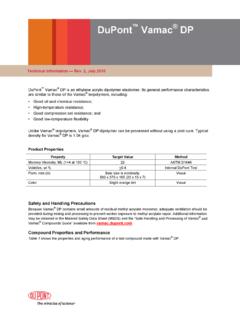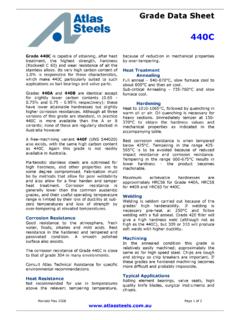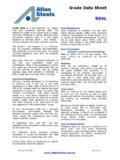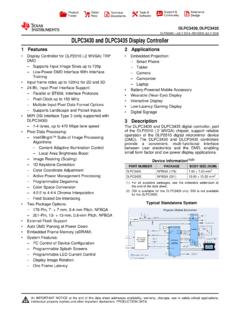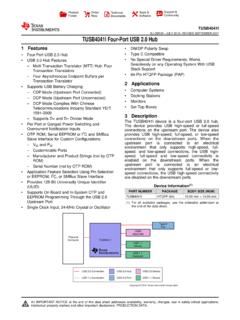Transcription of M 4 E Common Technical Document for the …
1 European Medicines Agency July 2003. CPMP/ICH/2887/99 - Efficacy ICH Topic M 4 E. Common Technical Document for the Registration of Pharmaceuticals for Human Use Efficacy Step 5. Common Technical Document FOR THE REGISTRATION OF. PHARMACEUTICALS FOR HUMAN USE. clinical overview AND clinical SUMMARY OF MODULE 2. MODULE 5: STUDY REPORTS. (CPMP/ICH/2887/99 - Efficacy). TRANSMISSION TO CPMP July 2000. RELEASE FOR CONSULTATION July 2000. DEADLINE FOR COMMENTS September 2000. TRANSMISSION TO CPMP FOR INFORMATION November 2000. RELEASE FOR INFORMATION November 2000. NUMBERING AND SECTION HEADERS EDITED FOR September 2002. CONSISTENCY AND USE IN E-CTD AS AGREED BY ICH. STEERING COMMITTEE. TRANSMISSION TO CPMP AND RELEASE FOR INFORMATION February 2003. DATE FOR IMPLEMENTATION July 2003. Note: The sequence of M4 Common Technical Document for the Registration of Pharmaceuticals for Human Use is: M4 - Organisation of Common Technical Document M4 Quality - Quality overall summary of Module 2 and Module 3: Quality M4 Safety - Nonclinical overview and Nonclinical Summaries of Module 2 and Organisation of Module 4.
2 M4 Efficacy - clinical overview and clinical summary of Module 2 and Module 5: clinical Study reports 7 Westferry Circus, Canary Wharf, London, E14 4HB, UK. Tel. (44-20) 74 18 85 75 Fax (44-20) 75 23 70 40. E-mail: EMEA 2006 Reproduction and/or distribution of this Document is authorised for non commercial purposes only provided the EMEA is acknowledged The Document as presented may be subject to further editorial changes and is for information only. Details on how to prepare a submission dossier based on the CTD format including information on the content of Module I are included in the revision of the Notice to Applicants. EMEA 2006 2. Common Technical Document FOR THE REGISTRATION OF. PHARMACEUTICALS FOR HUMAN USE: EFFICACY. clinical overview AND clinical SUMMARY OF MODULE 2. MODULE 5: clinical STUDY REPORTS. MODULE 2 : Common Technical Document SUMMARIES. : clinical overview . Preamble The clinical overview is intended to provide a critical analysis of the clinical data in the Common Technical Document .
3 The clinical overview will necessarily refer to application data provided in the comprehensive clinical Summary, the individual clinical study reports (ICH E3), and other relevant reports; but it should primarily present the conclusions and implications of those data, and should not recapitulate them. Specifically, the clinical Summary should provide a detailed factual summarisation of the clinical information in the CTD, and the clinical overview should provide a succinct discussion and interpretation of these findings together with any other relevant information ( , pertinent animal data or product quality issues that may have clinical implications). The clinical overview is primarily intended for use by regulatory agencies in the review of the clinical section of a marketing application. It should also be a useful reference to the overall clinical findings for regulatory agency staff involved in the review of other sections of the marketing application.
4 The clinical overview should present the strengths and limitations of the development program and study results, analyse the benefits and risks of the medicinal product in its intended use, and describe how the study results support critical parts of the prescribing information. In order to achieve these objectives the clinical overview should: describe and explain the overall approach to the clinical development of a medicinal product, including critical study design decisions. assess the quality of the design and performance of the studies, and include a statement regarding GCP compliance. provide a brief overview of the clinical findings, including important limitations ( , lack of comparisons with an especially relevant active comparator, or absence of information on some patient populations, on pertinent endpoints, or on use in combination therapy). provide an evaluation of benefits and risks based upon the conclusions of the relevant clinical studies, including interpretation of how the efficacy and safety findings support the proposed dose and target indication and an evaluation of how prescribing information and other approaches will optimise benefits and manage risks.
5 Address particular efficacy or safety issues encountered in development, and how they have been evaluated and resolved. explore unresolved issues, explain why they should not be considered as barriers to approval, and describe plans to resolve them. explain the basis for important or unusual aspects of the prescribing information. The clinical overview should generally be a relatively short Document (about 30 pages). The length, however, will depend on the complexity of the application. The use of graphs and concise tables in the body of the text is encouraged for brevity and to facilitate understanding. It is not intended that material presented fully elsewhere be repeated in the clinical overview ;. cross-referencing to more detailed presentations provided in the clinical Summary or in Module 5 is encouraged. EMEA 2006 3. Table of Contents Product Development Rationale overview of Biopharmaceutics overview of clinical Pharmacology overview of Efficacy overview of Safety Benefits and Risks Conclusions Literature References Detailed Discussion of Content of the clinical overview Sections Product Development Rationale The discussion of the rationale for the development of the medicinal product should: identify the pharmacological class of the medicinal product.
6 Describe the particular clinical /pathophysiological condition that the medicinal product is intended to treat, prevent, or diagnose (the targeted indication). briefly summarise the scientific background that supported the investigation of the medicinal product for the indication(s) that was (were) studied. briefly describe the clinical development programme of the medicinal product, including ongoing and planned clinical studies and the basis for the decision to submit the application at this point in the programme. Briefly describe plans for the use of foreign clinical data (ICH E5). note and explain concordance or lack of concordance with current standard research approaches regarding the design, conduct and analysis of the studies. Pertinent published literature should be referenced. Regulatory guidance and advice (at least from the region(s) where the clinical overview is being submitted) should be identified, with discussion of how that advice was implemented.
7 Formal advice documents ( , official meeting minutes, official guidance, letters from regulatory authorities) should be referenced, with copies included in the references section of Module 5. overview of Biopharmaceutics The purpose of this section is to present a critical analysis of any important issues related to bioavailability that might affect efficacy and/or safety of the to-be-marketed formulation(s). ( , dosage form/strength proportionality, differences between the to-be-marketed formulation and the formulation(s) used in clinical trials, and influence of food on exposure). overview of clinical Pharmacology The purpose of this section is to present a critical analysis of the pharmacokinetic (PK), pharmacodynamic (PD), and related in vitro data in the CTD. The analysis should consider all relevant data and explain why and how the data support the conclusions drawn. It should emphasise unusual results and known or potential problems, or note the lack thereof.
8 This section should address: pharmacokinetics, , comparative PK in healthy subjects, patients, and special populations; PK related to intrinsic factors ( , age, sex, race, renal and hepatic impairment) and to extrinsic factors ( , smoking, concomitant drugs, diet); rate and extent of absorption; distribution, including binding with plasma proteins; specific EMEA 2006 4. metabolic pathways, including effects of possible genetic polymorphism and the formation of active and inactive metabolites; excretion; time-dependent changes in pharmacokinetics; stereochemistry issues; clinically relevant PK interactions with other medicinal products or other substances. pharmacodynamics, , information on mechanism of action, such as receptor binding;. onset and/or offset of action; relationship of favorable and unfavorable pharmacodynamic effects to dose or plasma concentration ( , PK/PD relationships); PD support for the proposed dose and dosing interval; clinically relevant PD interactions with other medicinal products or substances; and possible genetic differences in response.
9 Interpretation of the results and implications of immunogenicity studies, clinical microbiology studies, or other drug class specific PD studies summarised in section of the clinical Summary. overview of Efficacy The purpose of this section is to present a critical analysis of the clinical data pertinent to the efficacy of the medicinal product in the intended population. The analysis should consider all relevant data, whether positive or negative, and should explain why and how the data support the proposed indication and prescribing information. Those studies deemed relevant for evaluation of efficacy should be identified, and reasons that any apparently adequate and well-controlled studies are not considered relevant should be provided. Prematurely terminated studies should be noted and their impact considered. The following issues should generally be considered: relevant features of the patient populations, including demographic features, disease stage, any other potentially important covariates, any important patient populations excluded from critical studies, and participation of children and elderly (ICH E11 and E7).
10 Differences between the studied population(s) and the population that would be expected to receive the medicinal product after marketing should be discussed. implications of the study design(s), including selection of patients, duration of studies and choice of endpoints and control group(s). Particular attention should be given to endpoints for which there is limited experience. Use of surrogate endpoints should be justified. Validation of any scales used should be discussed. for non-inferiority trials used to demonstrate efficacy, the evidence supporting a determination that the trial had assay sensitivity and justifying the choice of non- inferiority margin (ICH E10). statistical methods and any issues that could affect the interpretation of the study results ( , important modifications to the study design, including endpoint assessments and planned analyses, as they were specified in the original protocol; support for any unplanned analyses; procedures for handling missing data; and corrections for multiple endpoints).










